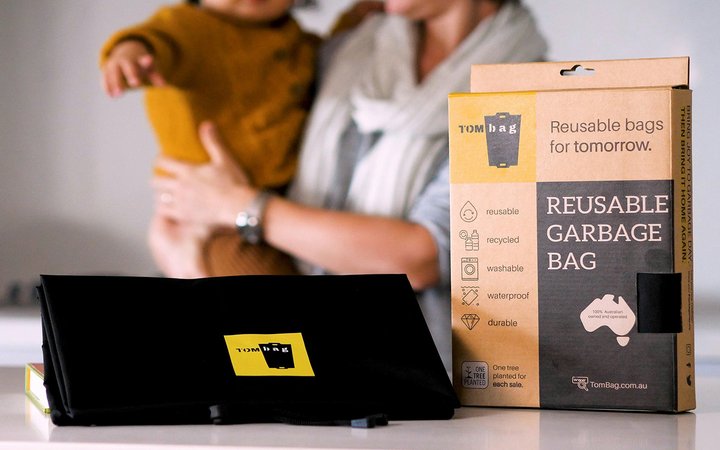Your Guide to Growing a Sustainable Brand

Sustainability has become a bit of a hot topic in recent years, creating a large subset of consumers who care about how their shopping habits impact the environment.
As this movement continues to grow, it’s crucial for online stores to adapt and take steps toward eco-friendly practices.
From reducing waste to offering environmentally friendly shipping options, merchants have countless ways to contribute to a healthier planet while still maintaining healthy profits.
In this article, we’ll explore how you can support the growing call for sustainability in ecommerce by implementing green initiatives into your business strategy.
What is sustainability?

Sustainability refers to the practice of meeting the needs of the present without compromising the ability of future generations to meet their own needs.
When you apply it to ecommerce, it involves implementing responsible business practices that protect and preserve our environment while also ensuring the long-term viability of our industry.
By slowly integrating sustainability into all aspects of your business, you can contribute to a healthier planet and a fairer future for everyone.
Why is it important?

Ecommerce sustainability matters for several reasons. First, it addresses the environmental impact of online shopping. From manufacturing to transportation, each stage of a product’s lifecycle contributes to its carbon footprint.
By focusing on sustainable practices at every touchpoint, ecommerce businesses can reduce their negative impact on the environment.
More importantly, new research shows that consumers are genuinely concerned about sustainability issues.
- Havas Creative found 65% of consumers believe that brands have as much responsibility as governments to create positive environmental change.
- According to a Nielsen survey, 48% of U.S. consumers said they are “definitely or probably changing their consumption habits to reduce the impact on the environment.”
- The Economist Intelligence Unit wrote about a 71% rise in online searches for sustainable goods globally.
By prioritizing eco-friendly initiatives, ecommerce retailers can not only minimize their environmental harm but also attract millions of environmentally conscious customers.
With the right planning, a sustainable business can save more money than its less caring competitors.
Investments in energy-efficient equipment or renewable energy are a great example of how you can lower operating costs while reducing waste and pollution.
All of this shows that embracing sustainability in ecommerce can be a win-win for both the planet and the bottom line.
5 Steps to move toward sustainable ecommerce
You might struggle to find the right ways to implement sustainable practices without negatively impacting your online store in the short term.
Here are five simple ways you can get started:
1. Choose eco friendly packaging materials

When designing your product packaging, consider using compostable mailers made from plant-based materials or recycled paper.
These sustainable alternatives don’t just reduce waste but also conserve precious resources—like trees and water.
You could switch to biodegradable shipping supplies that don’t harm marine life, such as plastic-free packing peanuts or compostable shipping bags.
By choosing sustainable options, you’ll significantly lower your environmental impact while setting an example for others in the ecommerce industry to follow.
The cherry on top? Most customers will view your eco-friendly packaging as USP, allowing you to charge a small premium.
2. Reduce waste and energy consumption

Even a small or midsize business can make a difference by minimizing waste and energy consumption.
If you have a warehouse, why not try using motion sensors to control lighting or optimizing heating and cooling system to save more?
Additionally, you can consider recycling programs for paper, cardboard, and other materials to reduce waste sent to landfills.
By adopting these practices and others like them, you’re not just controlling the environmental impact of your operation, you’re lowering the running costs!
3. Promote sustainable shipping options to customers

Offering customers a choice of carbon-neutral shipping methods shows your commitment to sustainability and appeals to an increasingly eco-conscious consumer base.
Consider partnering with carriers who use electric vehicles—like Packaly—or implementing ship-to-store pickups, which reduce emissions and traffic congestion.
By providing sustainable shipping options, you can foster a sense of environmental responsibility among your customers and contribute to the broader effort toward a greener future.
We recommend gently guiding customers to use these options by making them the default selection.
4. Educate your customers
Open communication with your customers is essential in fostering a sustainable business culture.
By sharing why sustainable practices matter and how their actions can contribute to the greater good, you’ll be able to position your brand as a thought leader and communicate your values clearly.
Creating high-quality content (like blog posts, YouTube videos, TikToks, etc.) that encourages sustainable living lets you build a loyal community of people who feel that your products are a core part of their lifestyle.
5. Partner with eco-conscious suppliers

Collaborating with other brands that prioritize sustainable practices in their production processes is another easy way to contribute to the cause.
By partnering with eco-conscious suppliers, you can ensure (and actively promote) that your products are sourced responsibly and minimize the environmental impact of your operations.
Sustainability is your key to success in 2024
Ecommerce sustainability isn’t just about saving the planet; it’s also about fostering customer loyalty and staying ahead of the curve in an increasingly eco-conscious market.
By adopting practices like the ones mentioned above, you’re not only taking a stand for environmental responsibility but also investing in your long-term success.
So let’s make this shift together and pave the way for a greener, more sustainable ecommerce future.
Ready to ditch paper invoices and go green?
Sufio can automatically create and send digital copies of Shopify invoices, credit notes, and other important documents for your online store.
Together with our 6000+ users, we save thousands of trees and streamline workflows by delivering invoices straight to your customer’s inbox.
Professional invoices for Shopify stores
Let Sufio automatically create and send beautiful invoices for every order in your store.
Install Sufio - Automatic Invoices from the Shopify App Store